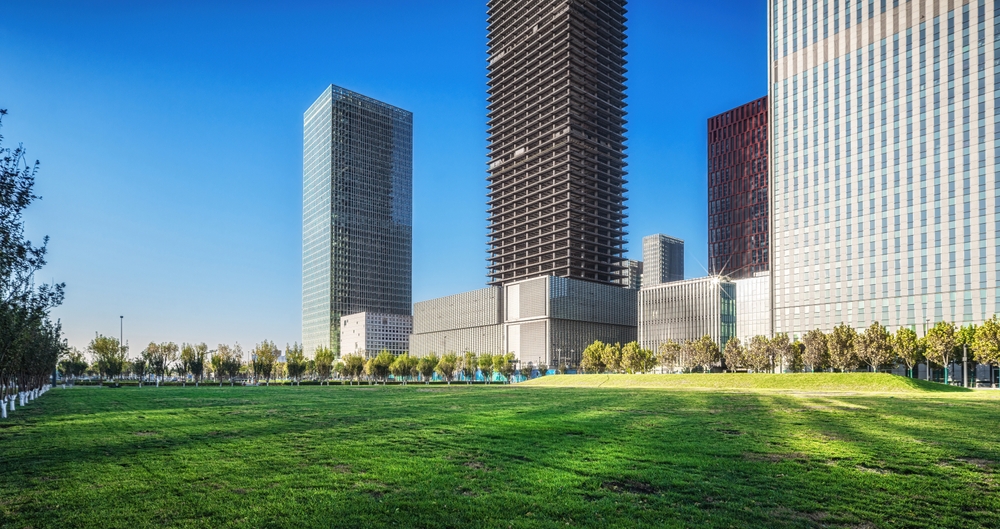In the bustling and competitive New York real estate market, every dollar counts. Property owners know that maximizing rental income is not just about setting high rents; it’s about strategic management, effective marketing, and maintaining a property that tenants are eager to call home. Whether you own a cozy apartment in Brooklyn or a commercial space in Manhattan, unlocking the full potential of your rental property can significantly boost your income and overall investment return.
Curco Properties understands the unique challenges faced by New York property owners. Our expertise in property management allows us to offer tailored solutions that help you achieve the highest possible rental income. This guide will walk you through proven strategies to enhance your property’s appeal, streamline management processes, and attract and retain quality tenants. By implementing these techniques, you can turn your property into a lucrative investment and enjoy a hassle-free ownership experience.
8 Best Ways To Maximize Rental Income
1. Set Competitive Rental Rates
Setting the right rental rate is crucial. Start by researching comparable properties in your neighborhood. Look at similar properties’ sizes, amenities, and conditions to understand the going rates. For multi families use websites like Zillow and Trulia.
Setting competitive rental rates is a foundational step in maximizing your rental income, especially in the commercial real estate sector. It begins with thorough market research, leveraging specialized tools and resources tailored for commercial properties. Platforms like CoStar, LoopNet, and REIS provide comprehensive data on current market trends, rental rates, and property comparisons. These tools offer insights into similar commercial properties in your area, including size, location, amenities, and condition, ensuring your rates are competitive yet attractive to potential tenants.
In New York, rental rates for commercial properties can vary significantly based on seasonality and market demand. Demand often peaks in the summer and during the end-of-year periods when businesses plan relocations or expansions. Adjusting your rates to capitalize on these peak times can enhance your rental income. During slower periods, such as the early months of the year, being flexible with pricing can help maintain occupancy rates. Understanding these seasonal trends and adjusting your rates accordingly is crucial for commercial property success.
Regularly reviewing and adjusting your rental rates using tools like ARGUS Enterprise, which provides scenario analysis and forecasting, is also essential. The commercial rental market is dynamic, influenced by economic conditions, local developments, and industry shifts. By staying informed and using advanced analytics, you can ensure your rates remain competitive and reflective of current market conditions. This proactive approach helps optimize your rental income by aligning your rates with market demands.
Consider offering flexible lease terms to accommodate different business needs. For instance, short-term leases might command higher rates but offer businesses the flexibility they need, while long-term leases provide stable income and reduce turnover costs. Additionally, incorporating escalation clauses in leases, where rent increases periodically based on predefined conditions such as inflation or market rates, can protect your income stream and ensure it keeps pace with market changes.
Transparency with prospective tenants about how rental rates are determined can build trust and justify your pricing. Clearly communicating the value and benefits they will receive, such as prime location, modern amenities, and responsive management, helps tenants understand the worth of their investment. Using tools like LeaseCalcs can help you demonstrate the financial aspects of the lease terms clearly.
By setting and maintaining competitive rental rates using specialized commercial real estate tools and strategies, you can attract and retain high-quality tenants, ultimately maximizing your rental income.
2. Enhance Property Appeal
Enhancing the appeal of your commercial property is essential for attracting and retaining high-quality tenants, ultimately maximizing rental income. In the competitive New York market, it’s crucial to stand out. Here are some key strategies to elevate your property’s appeal:
Curb Appeal
First impressions are vital. The exterior of your commercial property sets the tone for potential tenants. Ensure that the building’s facade is well-maintained, with clean windows, fresh paint, and attractive signage. Landscaping should be neat and professional, with trimmed lawns, well-kept plants, and clean walkways. Consider investing in exterior lighting to enhance visibility and security, making the property more inviting after dark.

Interior Upgrades
Modern, well-maintained interiors can significantly increase the attractiveness of your property. Focus on upgrading common areas such as lobbies, restrooms, and hallways. Use durable, high-quality materials that require minimal maintenance. Installing energy-efficient HVAC systems, LED lighting, and water-saving fixtures can not only reduce operating costs but also appeal to environmentally conscious tenants.
Office Layout and Amenities
Flexible office layouts are highly desirable in today’s market. Open floor plans that can be easily reconfigured allow tenants to customize their space according to their needs. Offering amenities such as high-speed internet, conference rooms, and shared workspaces can make your property more attractive. If possible, include on-site facilities like gyms, cafes, or daycare centers to provide added convenience for tenants.

Technology Integration
Integrating modern technology into your property can significantly enhance its appeal. Ensure robust IT infrastructure with high-speed internet access and ample power outlets. Implement smart building technologies, such as automated lighting and climate control systems, which can be controlled remotely and increase energy efficiency. Security features like keyless entry, surveillance cameras, and 24/7 monitoring are also highly valued by tenants.
Sustainability Features
Sustainability is increasingly important to businesses. Incorporate green building practices and certifications such as LEED (Leadership in Energy and Environmental Design) to attract eco-conscious tenants. Solar panels, energy-efficient windows, and sustainable materials can make your property more appealing while reducing operating costs. Promote these features in your marketing materials to highlight your commitment to sustainability.
3. Effective Marketing Strategies
In the bustling New York commercial real estate market, attracting the right tenants requires a strategic and focused marketing approach. At Curco Properties, we employ a blend of modern digital techniques and traditional marketing methods to ensure maximum visibility and engagement for your property.
4. Tenant Retention and Satisfaction
Ensuring tenant retention and satisfaction is key to maximizing rental income and maintaining stable occupancy rates in both multi-family and commercial properties. For multi-family units, prompt and efficient maintenance services are crucial.
Addressing repair requests quickly keeps tenants happy and prevents small issues from becoming major problems. Open communication is also essential; regularly checking in with tenants to address concerns and keep them informed about property updates fosters trust and a positive relationship. Offering lease renewal incentives, such as upgraded appliances or rent discounts for extended leases, can encourage long-term tenancy.
In commercial properties, responsive maintenance and open communication are equally important. Providing tenants with modern amenities like high-speed internet and secure parking can enhance satisfaction.
Organizing community-building events, such as tenant appreciation days or networking events, can create a sense of community and loyalty. For example, a commercial property could host monthly meet-and-greet sessions for all tenants, fostering a collaborative atmosphere. Finally, implementing tenant appreciation programs, like offering gift cards on lease anniversaries, can make tenants feel valued. By focusing on these strategies, you can enhance tenant satisfaction and retention, ensuring a stable and profitable rental income stream.
5. Implement Additional Revenue Streams
Maximizing rental income from commercial properties involves exploring additional revenue streams. Consider charging for parking spaces, a valuable commodity in New York City, which tenants are often willing to pay a premium for. Offering secure storage or warehouse space can attract retail and logistics companies in need of extra storage, generating substantial income.
Leveraging your property’s visibility for advertising can create an additional revenue stream, as can selling naming rights for the building or specific areas within it. Finally, adding shared amenities such as fitness centers or conference rooms and charging a membership or usage fee can enhance tenant satisfaction while boosting revenue.
Increasing revenue from multi-family units involves exploring various additional income opportunities. Introducing pet fees can be an effective strategy, as many tenants are willing to pay extra for pet-friendly accommodations.

6. Optimize Property Management
Optimizing property management is essential for maximizing rental income and ensuring smooth operations in both multi-family and commercial properties. Hiring a professional property manager can save time and reduce costs by handling day-to-day operations, from tenant screening and rent collection to maintenance and legal compliance. For multi-family units, professional management ensures that common areas and amenities are well-maintained, which can attract and retain tenants. Regular inspections and preventive maintenance help keep the property in excellent condition, reducing the likelihood of costly repairs.
In commercial properties, efficient management involves maintaining strong relationships with tenants and addressing their unique needs promptly. Implementing advanced property management software can streamline operations, providing real-time data on rent collection, maintenance requests, and occupancy rates. For instance, using software like Yardi or AppFolio can help manage multiple properties efficiently, offering automated reminders for lease renewals and maintenance schedules. Additionally, professional property managers stay updated on local, state, and federal regulations, ensuring compliance and minimizing the risk of legal issues.
Effective financial management is also crucial. Detailed record-keeping and regular financial reporting provide a clear picture of the property’s performance, helping identify areas for improvement. For example, tracking utility expenses and implementing energy-saving measures can reduce operating costs in both multi-family and commercial properties. By focusing on these strategies, property owners can optimize management processes, enhance tenant satisfaction, and ultimately maximize rental income.
7. Regular Property Maintenance and Upgrades
Regular property maintenance and strategic upgrades are vital for attracting and retaining tenants, ensuring tenant satisfaction, and maximizing rental income in both multi-family and commercial properties. For multi-family units, conducting routine inspections and preventive maintenance on systems like plumbing, electrical, and HVAC can prevent small issues from escalating into costly repairs. Ensuring that common areas, such as lobbies, hallways, and outdoor spaces, are clean and well-maintained can significantly enhance the living experience for tenants, making them more likely to stay long-term.
In commercial properties, maintaining the functionality and aesthetics of the building is equally important. Regularly servicing elevators, HVAC systems, and safety equipment ensures a safe and comfortable environment for business operations. Upgrading to energy-efficient lighting, windows, and heating systems can reduce operational costs and appeal to eco-conscious tenants. For example, installing LED lighting and low-flow fixtures can save on utility bills and attract businesses looking for sustainable office spaces.
Investing in high-return upgrades can also boost rental income. In multi-family units, modernizing kitchens and bathrooms with new appliances, fixtures, and finishes can make the property more appealing to prospective tenants. In commercial properties, creating flexible office layouts and upgrading technology infrastructure, such as high-speed internet and smart building systems, can attract a broader range of tenants. By focusing on regular maintenance and targeted upgrades, property owners can enhance the value and appeal of their properties, leading to higher occupancy rates and increased rental income.
8. Financial Management and Planning
Effective financial management and planning are crucial for maximizing rental income and ensuring the long-term success of both multi-family and commercial properties. Maintaining detailed records of all income and expenses helps property owners track profitability and identify areas for improvement. Using property management software like Yardi or AppFolio can streamline financial tracking, providing real-time insights into cash flow, rent collection, and maintenance costs.
Budgeting for regular and unexpected expenses is essential. Setting aside funds for routine maintenance, emergency repairs, and potential vacancies ensures that financial surprises do not disrupt operations. For multi-family properties, this might include budgeting for seasonal maintenance like snow removal or landscaping, while for commercial properties, it could involve setting aside funds for periodic upgrades to common areas or building systems.
Tax planning is another critical aspect of financial management. Taking advantage of tax deductions available to property owners, such as mortgage interest, property taxes, and depreciation, can significantly reduce taxable income. Consulting with a tax professional can help ensure that all eligible deductions are claimed and that tax strategies are optimized for maximum benefit.

For example, tracking utility expenses and implementing energy-saving measures can reduce operating costs and improve the property’s bottom line. In multi-family units, this might involve upgrading to energy-efficient appliances, while in commercial properties, it could include installing smart thermostats and automated lighting systems.
Regular financial reporting provides a clear picture of the property’s performance, helping owners make informed decisions about future investments and improvements. By focusing on meticulous financial management and strategic planning, property owners can enhance the profitability and sustainability of their rental properties, leading to increased rental income and long-term success.
Maximizing rental income requires a proactive approach and strategic planning. By setting competitive rental rates, enhancing property appeal, implementing effective marketing strategies, and optimizing property management, you can significantly increase your rental revenue. Regular maintenance, additional revenue streams, and sound financial planning further ensure the profitability of your investment. For expert property management services in the New York area, contact Curco Properties and let us help you achieve your rental income goals.
Ready to maximize your rental income? Contact Curco Properties today for a consultation and discover how our professional property management services can benefit you. Visit our website for more information and to get started on enhancing your property’s profitability.
